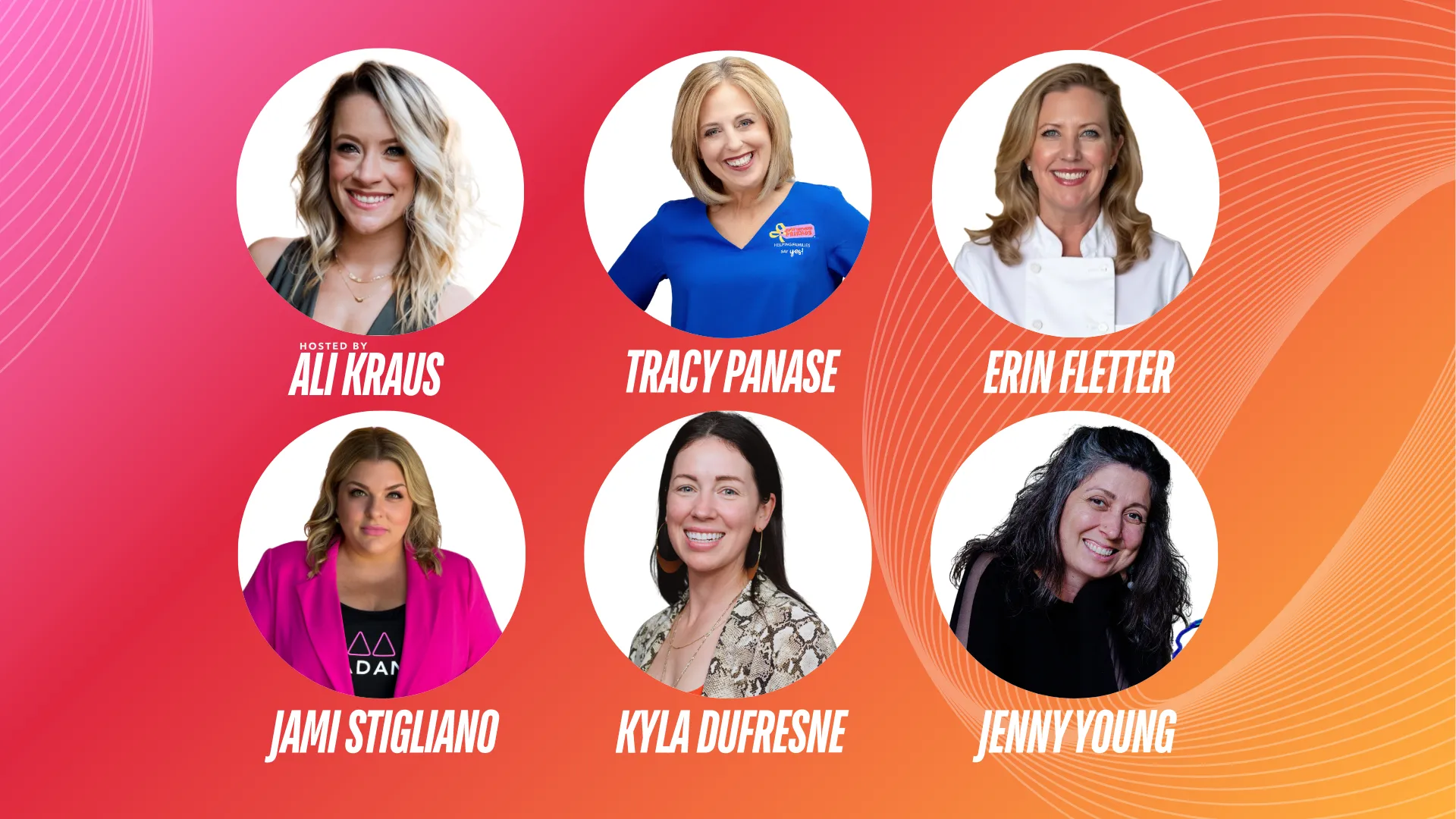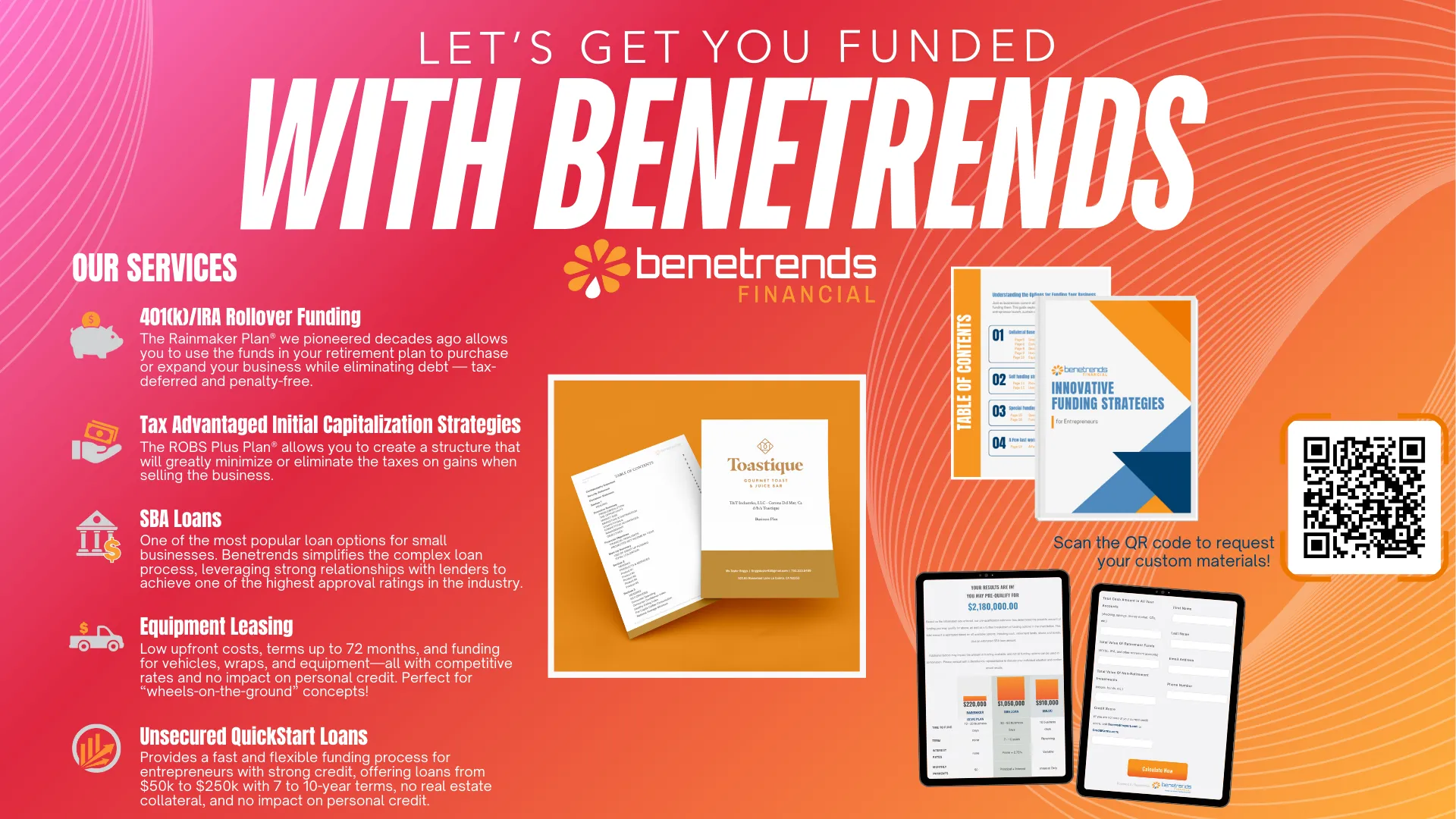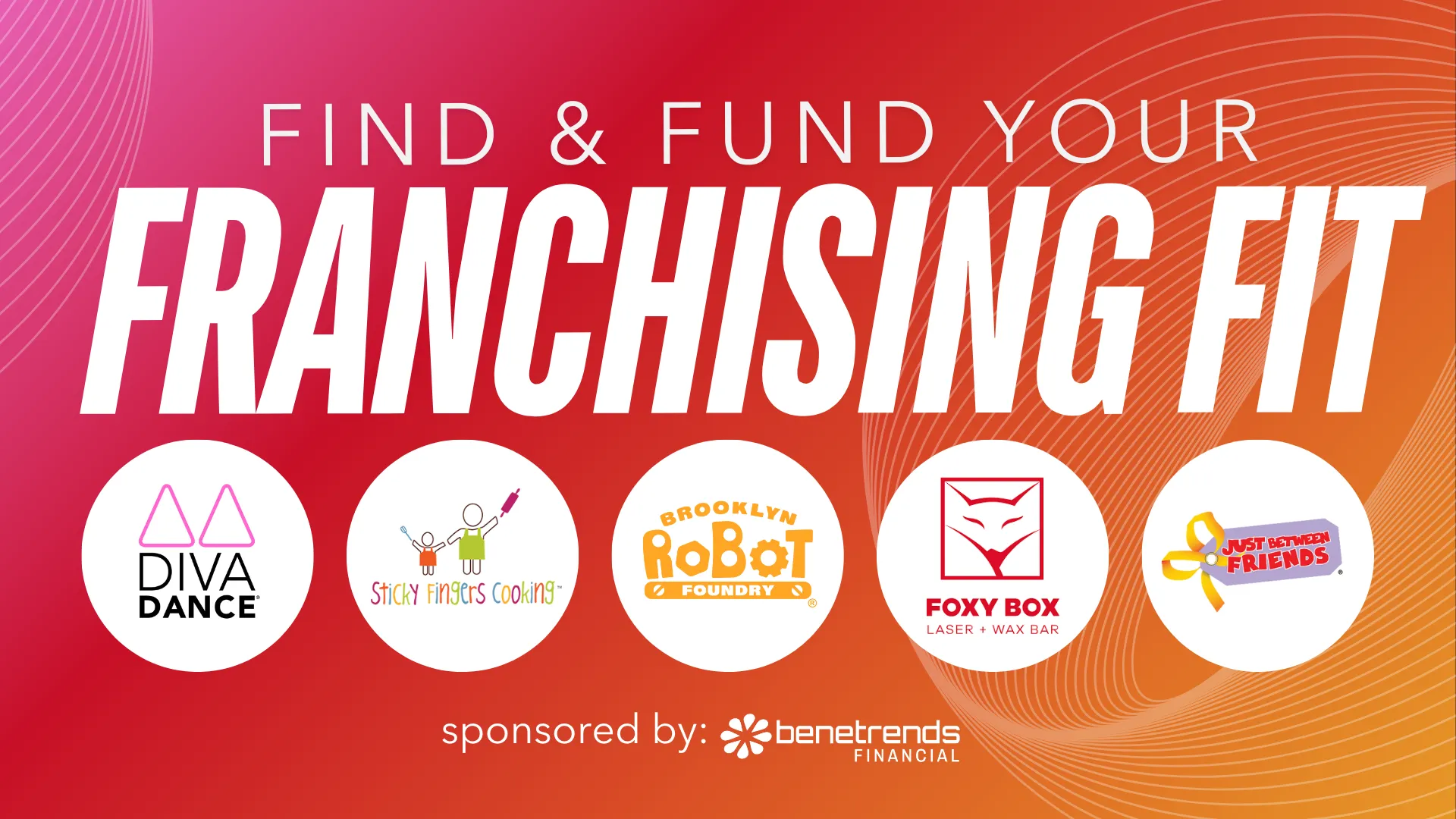Find & Fund Your Franchise Fit: 5 Powerhouse Women on Picking the Right Brand (and Paying for It)
If you’ve been flirting with the idea of business ownership but aren’t sure where to start, franchising can feel like the perfect middle ground: proven brand, playbook in hand, and a community that wants you to win. In “Find & Fund Your Franchise Fit,” hosted by Ali Kraus, Chief Marketing Officer at Benetrends Financial, five powerhouse executives sat down for a real conversation about choosing the right concept—and getting the money to make it happen.
Watch: Find & Fund Your Franchise Fit (On-Demand)
See a candid conversation on picking the right concept and mapping your funding plan.

The lineup:
- FoxyBox – A high-vibe waxing and laser studio concept with 20+ locations in Canada and a U.S. launch underway.
- DivaDance® – Dance choreography classes for adults with 50 locations across the U.S. and Mexico.
- Sticky Fingers Cooking® – Hands-on cooking classes for kids, now in 18 markets and growing.
- Brooklyn Robot Foundry – A STEM education franchise where kids build, design, and code their own robots; 10 locations in the U.S.
- Just Between Friends – The nation’s leading pop-up marketplace for families to buy and sell everything for kids, with 150 locations in 33 states.
Benetrends, a leader in franchise and small-business funding for 40+ years, sponsored the conversation—and brought the straight talk on funding options, timing, and what lenders really look for.
Why franchising – and why now
There’s never been more consumer demand for experiences and community. Parents want enrichment for kids. Adults want movement, fun, and connection. Busy professionals want services that save time and feel good. Each brand listed here sits squarely in those sweet spots, which is why they’re expanding.
But choosing the right brand isn’t about what’s “hot” on social. It’s about alignment. The best franchisees match a concept’s customer, culture, and operating model. If you love building teams, enjoy community engagement, and can follow a playbook, you’re already ahead.
Meet the models: how each brand works.
FoxyBox: Boutique, repeat-visit services with membership potential. High emphasis on guest experience, staff training, and smart scheduling to maximize room utilization.
DivaDance: Membership-driven classes, pop-up parties, and private events. Community and culture are everything; marketing is social-first with strong local partnerships.
Sticky Fingers Cooking: Mobile, programmatic business that partners with schools and community centers. Scalable with a lean core team and an instructor network.
Brooklyn Robot Foundry: Curriculum-based STEM programs, camps, and parties. Multiple revenue streams across after-school, weekend, and summer offerings.
Just Between Friends: Pop-up retail events several times a year that require excellent logistics, volunteer coordination, and community outreach—high impact in short windows.
How to find your franchise fit (a practical framework)
- Start with your “why.” Do you want flexibility? To build a team? To create a community hub? Your why will narrow the field fast.
- Map your strengths to the role. Most franchise owners are CEOs—not solo operators. You’ll lead people, manage P&Ls, and drive local marketing.
- Define your guardrails. Be honest about available capital, hours you can commit, and how soon you want to open.
- Interview the brand like it’s a business partner. Ask about unit economics, breakeven timelines, training, technology, and real-world support.
- Validate with existing owners. These calls are gold. Ask what surprised them, what the brand does exceptionally well, and what they wish they’d known.
- Look beyond the launch. Can you add locations? Add programs? Build a manager-led model so you can work on the business, not only in it.
What it’s really like to be a franchisee
- You’re the culture. Whether you run a class-based studio or a pop-up marketplace, your energy sets the tone for your team and customers.
- Local marketing matters. Corporate gives you the toolkit; you make it sing through social, partnerships, community events, and PR.
- Systems win. The brands provide training, technology, and operating procedures. The owners who excel implement consistently and coach their people.
- It’s intensely rewarding. When a kid lights up as their robot moves, a dancer finds her confidence, or a parent saves hundreds at a JBF sale—that’s the fuel.
Funding 101: how people actually pay for a franchise
Benetrends laid out the core playbook. A typical capital stack blends personal funds with one or more of the options below. Your best mix depends on credit profile, liquidity, timeline, and whether you’re opening a facility or running a mobile/asset-light model.
- SBA 7(a) loans: The most common option for service and studio concepts. Think longer terms and lower down payments than conventional loans. Expect to bring 10–30% equity, have strong personal credit, and document projections and use of funds.
- SBA 504 loans: Ideal for real estate or major building expansions. Fixed-asset focus, longer amortization.
- ROBS (Rollover for Business Startups): Use eligible retirement funds (401(k)/IRA) to invest in your business without early-withdrawal penalties or taxes. Works well paired with SBA financing.
- Unsecured working capital lines: Fast access to cash for marketing, hiring, and ramp-up, often used alongside a primary loan.
- Equipment financing: Ideal for concepts with defined gear packages (such as robotics, kitchen kits, or studio equipment).
- HELOC or home-equity solutions: Low-rate bridge financing when appropriate.
- Multi-unit planning: If you’ll open multiple locations, build that into your funding plan early so you’re not starting over each time.

What lenders look for (so you can be ready)
- Credit and character: Clean credit history and a track record of responsibility.
- Liquidity: Sufficient cash for your down payment plus a runway for working capital.
- Collateral and net worth: Helps with loan approval and terms.
- Experience and support: Your background plus the franchisor’s training and systems.
- A realistic plan: A pro forma that reflects local costs, a marketing plan, and a staffing strategy.
Your 90-day action plan
- Week 1–2: Clarify your why, your guardrails, and your timeline. Pull credit reports and gather financial docs (tax returns, retirement balances, bank statements).
- Week 2–4: Book brand discovery calls with FoxyBox, DivaDance, Sticky Fingers Cooking, Brooklyn Robot Foundry, and Just Between Friends (or your short list). Request FDDs.
- Week 4–6: Run validation calls with current owners. Visit locations or events if possible. Build a draft pro forma and opening budget.
- Week 6–8: Meet with a funding strategist at Benetrends to compare SBA, ROBS, and working-capital options tailored to your timeline and risk tolerance.
- Week 8–10: Narrow to one brand. Review territory availability, training dates, and support resources.
- Week 10–12: Make your decision, complete funding pre-qualification, and prep for training and launch.
How each brand stands out (at a glance)
- FoxyBox: Modern aesthetic, repeatable memberships, and a fun-first guest experience in a booming self-care category.
- DivaDance: Confidence-building classes and private parties built on community, membership, and viral-ready marketing.
- Sticky Fingers Cooking: Mission-driven enrichment with school partnerships and a scalable instructor model.
- Brooklyn Robot Foundry: Future-proof STEM programming with multiple revenue streams and a strong curriculum backbone.
- Just Between Friends: Purpose-led resale model that saves families money, reduces waste, and builds loyal local followings.
Pro tips from the panel
- Fall in love with the customer, not just the logo. If you light up when you describe the experience, you’re in the right place.
- Treat due diligence like a job. Take notes, ask follow-ups, and compare what the brand promises with what owners say.
- Plan your personal runway. Even great businesses take time to ramp. Funding your working capital up front removes avoidable stress.
- Choose a brand that invests in you. Training, marketing assets, innovation, and a supportive owner community are non-negotiables.
Ready to explore?
If this conversation sparked something, your next step is simple: talk to the brands and talk to a funding expert. A 20-minute call can clarify which concepts match your goals and what your funding path could look like before you spend a dollar.
Because the truth is, there isn’t one “perfect” franchise. There’s the one that fits your strengths, your lifestyle, and your vision for the future-and the right funding plan to help you get there.
Call to action options (use one or both):
- Explore DivaDance franchise opportunities and request the franchise guide.
- Schedule a funding consultation with Benetrends to see your options and timelines.
Franchise FAQs
Can I open multiple territories?
Yes. Many owners plan for multi-unit growth. If you’re exploring multiple territories, discuss development timelines and discounts with the brand’s franchise team and include multi-unit funding in your Benetrends strategy from day one.
How long does SBA 7(a) funding usually take?
Most 7(a) loans close in roughly 45-75 days from a complete application, depending on lender volume and your readiness (financials, business plan, and projections). Pre-qualification with Benetrends can shorten the path.
How much capital do I need to open?
It varies by concept and market. Plan for initial franchise fee, build-out or launch kit, hiring/training, marketing, and 3-6 months of working capital. A funding specialist can tailor a pro forma to your metro and model.
Do I need dance or industry experience to own a DivaDance franchise?
No dance background required. You’ll lead people, marketing, and operations while leveraging the brand’s training, choreography, and playbooks.
Can I keep my day job and hire a manager?
Many owners launch with a manager-led model once KPIs and cash flow support it. Discuss expected owner involvement during validation calls.
What is a ROBS, and is it legal?
ROBS (Rollover for Business Startups) allows you to invest eligible retirement funds into your business without early-withdrawal taxes or penalties. When structured and administered properly, it’s legal and commonly paired with SBA financing.

